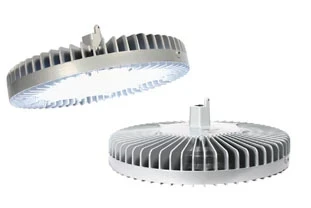Convergence in Building Automation

According to a recent report by Accenture, the Industrial Internet of Things (IIoT) could drive many trillions of dollars in economic growth worldwide in the next 15 years. Building automation is expected to represent a huge chunk of the total IIoT opportunity—at least, for those able to take advantage of this monumental technology shift.
Here are 10 things to know that will help you grab your own slice of the IIoT pie.
1
The Internet of Things is about convergence of previously disparate systems, technologies, devices and management responsibilities. The most common emphasis is on the ‘Internet’ aspect of the IoT, but it’s also important to remember the ‘Things’ part. This means thinking about not only data movement for analytics—such as from sensors to a physical server or within the cloud—but also about data movement that enables control of devices in the real world.
This control aspect might sound obvious, but it’s one of the most differentiating and often overlooked characteristics of the IoT. Control networking is a complex discipline with a decades-long history, starting well before the Internet was even conceived, much less in place. In many ways, in fact, the IoT can be thought of as the 2.0 version of control networking.
2
The common ‘language’ of the IoT is Internet Protocol (IP), which arose from the world of information technology (IT), and the common input is via sensors. The flourishing of the Internet depended on bridging the disparate networking connecting PCs of the 1980s era, and the ‘bridging’ protocol was IP. The flourishing of the IIoT similarly depends on industrial device networks’ ability to intercommunicate, even in the face of incompatible protocols and connectivity media. And as with the Internet, the common protocol is IP.
3
The Industrial IoT (IIoT) has more stringent requirements for reliability, security and hardiness than the Consumer IoT world of wearables and mobile phone-controlled activities. The IIoT applies to industrial and commercial applications that include not only building automation, but also things like industrial automation, lighting, commercial transportation, smart cards, test and measurement, and the energy grid.
In the Consumer or Human IoT, human users are integral to the interaction with the Internet. But the Industrial IoT has the added dimension of autonomous communities of devices able to take action directly, without mediation through a centralized cloud infrastructure.
The Consumer IoT and Industrial IoT also differ significantly in their tolerance for reliability and availability. If a home thermostat malfunctions or stops working, it might cause discomfort. If a hospital’s building automation system malfunctions or stops working, it could literally be a matter of life and death.
Another important point is that while wireless connectivity is assumed in the Consumer IoT, the IIoT requires both wired and wireless connectivity. From a practical perspective, many industrial environments are simply not appropriate for wireless links. These industrial environments might be underground, or underwater, or have levels of vibration or noise that interfere with wireless signals. For IIoT solutions, look for integrated wired and wireless solutions.
4
An important aspect of the IIoT is the billion or so existing industrial and commercial devices—what we refer to as operational technology (OT)—which are typically long-lived, pre-IP devices. One of the most under-appreciated differences between consumer and industrial devices is their longevity. Industrial automation has been around for a long time, and many industrial devices predate the IoT terminology by 20 or 30 years. Integrating existing OT devices and applications into the IIoT is one of the biggest challenges in this transition, and it’s one that hasn’t received nearly as much attention as it should.
5
Building automation is a classic OT/IT mix: fragmented OT systems for HVAC, lighting, security, elevators, among others—each with their own networks, protocols and sets of data collected—increasingly coming under IT department control. Fragmentation of automation technology within buildings is slowing innovation. The transition to greater IT control encompasses not only technology adjustments, but also operational, cultural and even emotional adjustments. People accustomed to having control over their own fiefdoms within building automation will have to get used to collaborating much more closely and directly with the IT department.
At the same time, IT teams will be called upon to have much greater knowledge of building automation systems that previously weren’t something they thought about too deeply. Because of the prevalence of consumer IoT applications, many people think of the move to the IoT as a one-way leap forward, into the future. But for the IIoT in particular, it’s equally important to think of extending the IIoT ‘back’ to also incorporate legacy OT devices.
6
For building owners to leverage investments in their OT systems, these legacy networks must be integrated with modern converged IT infrastructures, onto a common IP-based platform. Doing this requires intermediary technologies able to translate protocols and other technical processes between OT and IT domains.
Currently, industrial systems connect to the Internet and internal IP networks through gateways. Additionally, a number of interrelated technical shifts are enabling OT devices to take advantage of IP without the expense and hassle of IP-enabling each individual device.
One advancement to watch is the emergence of new IIoT-specific platforms that are multi-protocol, multimedia (that is, supporting both wired and wireless connectivity) and able to perform control networking using IP all the way to the end device.
7
Anyone involved in specifying, choosing, purchasing or operating building automation equipment can increase their impact and effectiveness in proportion to their knowledge of OT/IT convergence. Sticking with a siloed approach to building automation expertise will be counterproductive as the IIoT becomes commonplace. Increasingly, those who educate themselves on the IIoT, and on OT/IT convergence details, will be in great demand.
Embracing rather than resisting the convergence is your wisest strategy.
8
Melding the worlds of OT and IT is far from trivial or easy; The structural changes represented by the IIoT are on a par with the industrial revolution, so the shift will not happen overnight. Entirely new ecosystems are being created, based on networks being established peer-to-peer among industrial and commercial devices, between humans and industrial devices, and with the Internet.
Unfortunately, most things that are easy to interconnect—that is, anything to which a cellular connection of Wi-Fi radio can be easily attached—have already been connected. But it’s harder to connect things that can’t support these interfaces, which describes a large percentage of IIoT devices.
In lighting, for instance, the cost of a Wi-Fi or cellular radio exceeds the value of connecting most fixtures. And devices that require high levels of reliability and security, including the majority of the IIoT world, are not suitable for radio connections. Similarly, IIoT environments with harsh physical conditions are often incompatible with Wi-Fi and radio signals.
9
There are a few key parameters to consider when evaluating potential IIoT solutions that will help make the transition easier. Some of these have been mentioned already, but they include:
• Look for IIoT-specific platforms.
• Find out if the solution can handle multiple protocols, including for building automation and IT networks.
• Make sure there’s a plan to integrate existing OT devices, networks and systems into the IIoT solution—providing an ‘onramp’ to the IIoT for established industrial device networks.
• Be wary of an IIoT solution that doesn’t offer options for wired connectivity in addition to wireless links.
• Consider factors such as industrial-grade security, resiliency in the face of failures, high levels of availability, and scalability to thousands of nodes spread among multiple links.
10
Ultimately, the reason to pursue OT/IT convergence and participation in the IIoT is to achieve benefits such as greater efficiency, cost-effectiveness, overall business value, tenant comfort and safety, and other quality-of-life improvements. The IIoT is not a singular technology, but rather multiple technologies and networks and systems working together in synchrony. The promise of the IIoT in building automation lies in converging disparate systems, both OT and IT, onto a common IP platform so they can intercommunicate.
Justification for pursuing convergence and IIoT participation will lie in hard numbers: lower energy and operating costs, faster time to market, greater productivity, less-expensive maintenance and all the rest. But as those who have already embarked on IIoT implementations have found, the secondary and tertiary benefits might be even more profound over the long term.
Converged platforms supporting multiple protocols open the door to expanded markets and revenue opportunities for those involved in designing, manufacturing, operating and managing building automation products and services. Everyone from designers to specifiers can focus on product and service functionality rather than worrying about protocols and communication transport compatibility issues. Remote monitoring and control of physical assets frees up people to work on higher-value activities.
In addition, comfortable, safe and efficient buildings can become a competitive tool for attracting tenants or for generating higher revenues from a property. And those lucky enough to live and work in a building with converged building automation systems—delivering excellent lighting, just the right temperature, solid security and smoothly running, automated systems of all kinds—can enjoy benefits that might be difficult to quantify, but that are experienced as enhancing their overall quality of life. IPT








